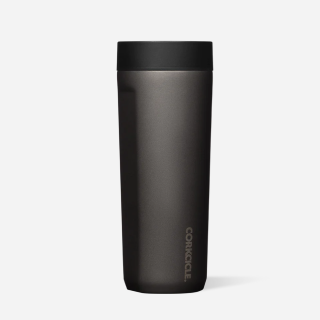Whiskey, the very word conjures up images of leather-bound books, crackling fires, and a smooth, amber liquid swirling in a glass. It is a drink that is as complex as it is old fashioned, with a character that can only be appreciated through a combination of knowledge, patience, and a touch of personal flair. Whether you are a novice to the world of whiskey or a seasoned enthusiast looking to refine your palate, the journey to whiskey mastery is one of the most rewarding paths in the world of spirits. So let us raise a glass to the art of whiskey enjoyment, exploring the cultural tapestry and intricate nuances that make this beverage a global favorite.
Types of Whiskey
Beyond the well-known categories of Scotch Whiskey, Bourbon, and Rye Whiskey, the wide world of whiskey offers a spectrum of flavors influenced by local grains, distillation methods, and aging processes. Irish whiskey, often triple-distilled, offers a smooth and mellow profile, while Japanese whiskey, which has been gaining international acclaim, is known for its precision and balance.
Each type invites a different approach on how to drink whiskey,with nuances that can be savored in the quiet moments of reflection or shared amongst friends during lively discussions. Delving into the diverse types of whiskey is like exploring the chapters of a vast, unfolding story, each with its own setting, characters, and plot twists.
Selecting the Right Glassware
The right whiskey glass not only enhances the whiskey's aromas and flavors but also complements the drinker's style. A heavy tumbler feels substantial and comforting in the hand, suitable for a casual evening sip, while the elegant Glencairn lowball glass adds a ceremonial touch to your tasting session, making it an event. There are a wide variety of types of whiskey glasses, with an option for every taste and preference.
For those who enjoy their whiskey with a cooling touch, the Corkcicle Whiskey Wedge provides a modern, stylish solution that impresses guests and preserves the integrity of the whiskey. On the other hand, for those who prefer the ritual of whiskey, a Cigar Glass capable of simplifying the experience of puffing and sipping may be the preferred choice. The choice of barware is a personal statement in the ritual of whiskey drinking, reflecting both the drinker's taste and the occasion.
The Tasting Process
Engaging in the whiskey-tasting process is a ritual that unfolds through a series of deliberate steps, each designed to unlock the full experience of the whiskey's character:
Visual Inspection
It begins with the eyes, appreciating the whiskey's hue, which can tell you about its age and the type of cask used for aging. Look for clarity and viscosity, which can indicate body and texture.
Nosing
The nose then takes over, deciphering the layered scents from the subtlest vanilla to the most pronounced smoke. Swirl the whiskey gently to release volatile aromas. Nose the whiskey at different distances to capture both the lighter and heavier compounds. Identify the different layers of aroma, from the immediate notes to the deeper, more elusive scents.
The Sip
Take a small, thoughtful sip and let it spread across your tongue. As the whiskey finally meets the palate, it is important to note the balance between sweetness, acidity, bitters, and the warmth that spreads through the chest—a sensation affectionately known as the 'Kentucky hug.' Notice the mouthfeel—is it oily, creamy, or perhaps silky?
The Finish
Pay attention to the aftertaste and the length of the finish. Does it linger or dissipate quickly? Reflect on the evolution of flavors from the initial taste to the final note. Consider the overall complexity and whether the whiskey changes character as it rests on the palate.
Documenting Your Impressions
Documenting your impressions can enhance your appreciation and help you become a more discerning taster over time. Keep a tasting journal to note your observations and thoughts, and compare your notes when drinking whiskey for a second or third time to see how your perception may have changed. Share your experiences with fellow enthusiasts to learn from different perspectives.
By following these steps, you can systematically explore and appreciate the intricate profile of each whiskey, turning each tasting into a memorable and educational experience.
Whiskey Drinking Etiquette
While there are traditional ways to enjoy whiskey, the modern whiskey scene is all about personal preference. Some purists may advocate for a neat pour, while others endorse the occasional addition of a few drops of water to open up the whiskey's bouquet.
It is also considered good form to cleanse your palate between different whiskeys to give each type the attention it deserves. And while whiskey has a storied past, the contemporary scene is vibrant and evolving, inviting both respect for tradition and the excitement of innovation.
Pairing Whiskey with Food
The art of pairing whiskey with food is about creating harmony between contrasting and complementary flavors. A peaty Scotch might pair beautifully with the sweetness of a caramel dessert, while the high rye content of bourbon whiskey makes it a perfect match for spicy dishes.
When pairing, consider the body and flavor profile of the whiskey—lighter whiskeys may go well with seafood or poultry, while fuller-bodied whiskeys can stand up to red meat or rich chocolate. The goal is to enhance both the whiskey and the food, creating a sum greater than its parts.
In the end, the art of enjoying whiskey is a personal journey, one that evolves with every glass and every taste. Whether you are sipping a rare vintage or a widely available blend, the true measure of whiskey's worth is the pleasure it brings. So, explore with an open mind, trust your palate, and let the spirit of whiskey lead you to more discoveries. Remember, the best whiskey is not necessarily the most expensive or the most acclaimed, but the one that resonates with you. Cheers to your whiskey adventure!







